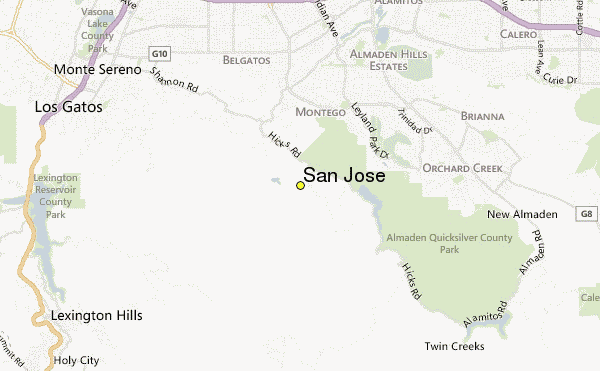Understanding the Weather in San Jose: A Comprehensive Guide
San Jose, located in the heart of Silicon Valley, is known for its vibrant tech scene, cultural diversity, and pleasant climate. Understanding the weather patterns of this bustling city can enhance your experience whether you’re a resident or planning a visit. This article delves into the intricacies of San Jose’s weather, providing valuable insights and tips to navigate its unique climate.
Key Takeaways
- San Jose enjoys a Mediterranean climate with mild, wet winters and hot, dry summers.
- Understanding seasonal variations can help in planning outdoor activities and travel.
- Weather patterns are influenced by the city’s geographical location and elevation.
- Climate change is impacting weather patterns, contributing to temperature fluctuations.
The Mediterranean Climate of San Jose
San Jose boasts a Mediterranean climate, characterized by its distinct wet and dry seasons. This type of climate is prevalent in coastal regions, offering a mix of warm summers and mild winters. Understanding the nuances of San Jose’s weather can help residents and visitors alike make the most of what the city has to offer.
Winter in San Jose: Mild and Wet
Winter in San Jose spans from December to February, bringing with it mild temperatures and increased precipitation. The average temperatures range from 41°F to 60°F, making it relatively comfortable compared to other regions. Rainfall is more frequent during these months, providing much-needed hydration to the local flora. Despite the rain, sunny days are not uncommon, offering a pleasant mix of weather conditions.
Spring: A Time of Renewal

Springtime in San Jose, from March to May, is marked by gradually warming temperatures and decreasing rainfall. Average temperatures rise from 45°F to 70°F, creating an ideal environment for outdoor activities. The city comes alive with blooming flowers and vibrant greenery, making it a picturesque time to explore parks and nature trails.
Summer: Hot and Dry
Summers in San Jose, from June to August, are characterized by hot and dry conditions. Average temperatures range from 57°F to 84°F, with occasional spikes during heatwaves. The lack of rainfall during these months means that residents rely heavily on water conservation efforts. Despite the heat, the evenings tend to cool down, offering a respite from the daytime temperatures.
Fall: The Transition Season
Fall, spanning from September to November, sees a gradual decline in temperatures and the return of occasional rainfall. Average temperatures range from 51°F to 77°F, providing a comfortable climate for outdoor festivals and events. The changing foliage adds a splash of color to the cityscape, making it a favorite season for many locals.
Geographical Influence on Weather
San Jose’s geographical location plays a significant role in its weather patterns. Situated in a valley and surrounded by mountains, the city experiences a unique microclimate. The Santa Cruz Mountains to the west and the Diablo Range to the east create a rain shadow effect, contributing to the city’s dry summers.
Additionally, the city’s elevation, at approximately 82 feet above sea level, influences temperature variations. Higher elevations in the surrounding areas can experience cooler temperatures, especially during the winter months, offering a diverse range of climates within a short distance.
Impact of Climate Change

Like many regions worldwide, San Jose is experiencing the impacts of climate change. Temperature fluctuations and changes in precipitation patterns are becoming more noticeable. Increased frequency of heatwaves and prolonged dry spells are some of the challenges the city faces.
Efforts are underway to mitigate these effects through sustainable practices and environmental initiatives. Residents and local authorities are working together to promote water conservation, reduce carbon emissions, and enhance green spaces, ensuring that San Jose remains a vibrant and livable city.
Tips for Navigating San Jose’s Weather
Understanding the weather in San Jose can enhance your experience, whether you’re a local or a visitor. Here are some tips to make the most of the city’s climate:
- Stay Hydrated: During the hot summer months, ensure you drink plenty of water to stay hydrated.
- Dress in Layers: The temperature can vary significantly from morning to evening, so dressing in layers can help you stay comfortable.
- Check Weather Forecasts: Before planning outdoor activities, check the local weather forecasts to avoid unexpected changes.
- Embrace Rainy Days: During the winter, embrace the rain by exploring indoor attractions and cozy cafes.
San Jose’s weather, with its Mediterranean charm, offers a delightful mix of seasons that cater to diverse preferences. Whether you enjoy the warmth of summer or the refreshing rains of winter, the city’s climate provides a backdrop for a vibrant lifestyle. By understanding the weather patterns and preparing accordingly, you can make the most of your time in this dynamic city.
As climate change continues to influence weather patterns, staying informed and adopting sustainable practices can help preserve San Jose’s unique climate for future generations. Embrace the city’s weather, and let it enhance your Silicon Valley experience.




